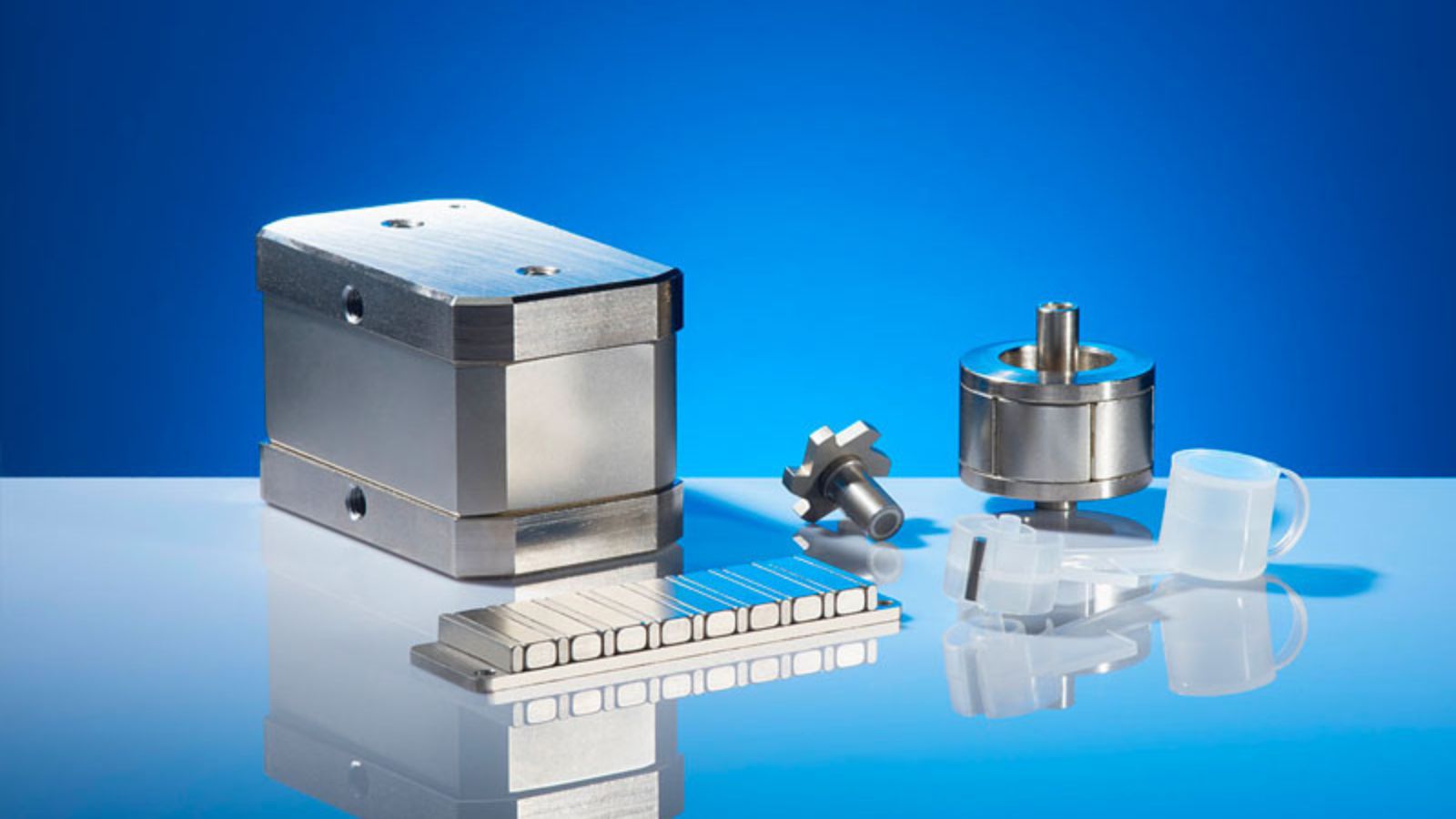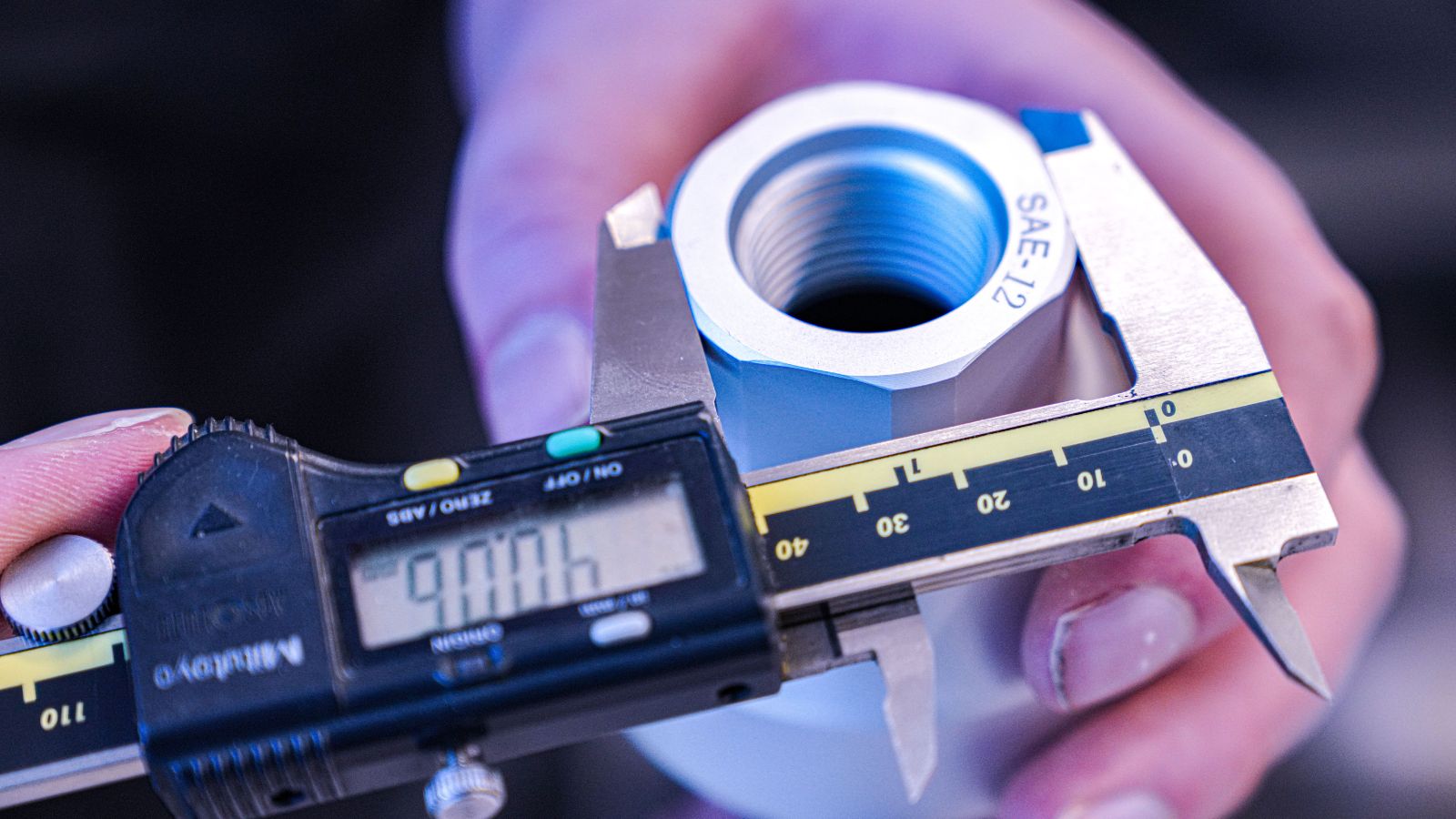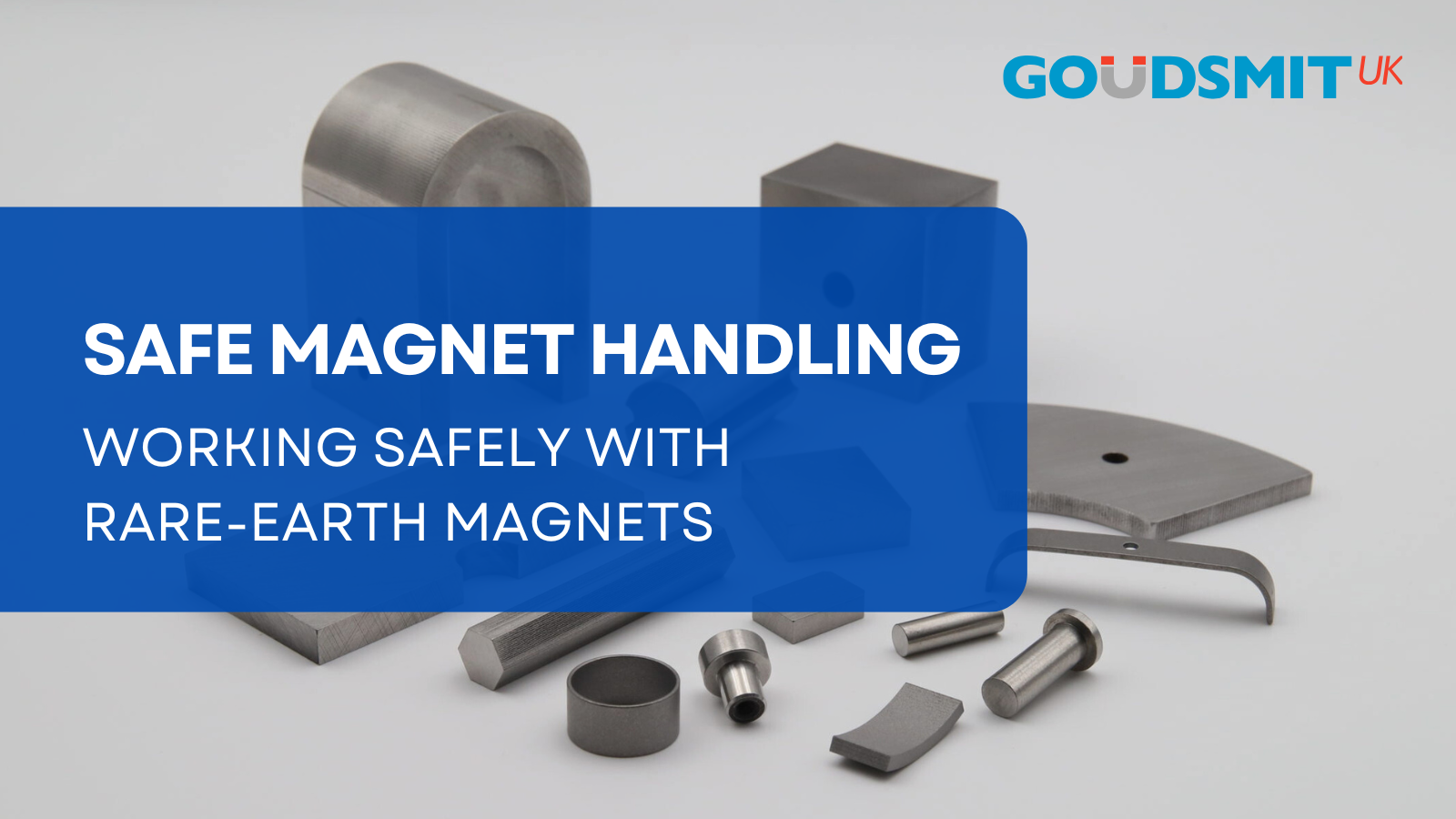Rare-earth magnets, such as Neodymium and Samarium-Cobalt, are exceptionally strong permanent magnets made from alloys containing rare-earth elements.
As a result of their strength, these magnets require careful handling to avoid injuries and hazards.
This guide provides essential tips and precautions for handling these powerful magnets safely.
Hazards Associated with Rare-Earth Magnets
1) Pinching & Crushing Injuries: Magnets larger than a few centimetres exert forces strong enough to cause severe injuries, including broken bones, if body parts become pinched between two magnets or between a magnet and a metal surface.
2) Shattering & Eye Injuries: Magnets that come too close can collide with significant force, causing chips and shattering. These flying fragments pose serious injury risks, particularly to the eyes.
3) Child Safety: Children must never handle rare-earth magnets due to the severe risk of internal injuries if magnets are swallowed.
4) Damage to Electronic & Magnetic Media: Strong magnetic fields can erase or corrupt magnetic media, including hard drives, credit cards, and watches.
5) Health Risks: Individuals with pacemakers or internal medical devices should avoid handling rare-earth magnets, as magnetic fields can interfere with the operation of these devices.

General Safe Handling Procedures
Preparation:
- Remove all metallic objects (pens, pocket knives, flashlights, scales, watches, keys, belt buckles, belts, wallets) from your person and store them away from the magnet handling area.
- Clear the handling area of all clutter and magnetic materials before opening the magnet container.
Workspace Setup:
- Open magnet containers only on non-magnetic work surfaces, such as wood or plastic, ensuring no magnetic surface is beneath this work surface.
- Clearly mark the magnet work area with appropriate warning labels and signs. Barricade the area if possible.
- Alert co-workers about magnet hazards and ensure unauthorized personnel are kept away from the work area.
Handling Best Practices:
- Open and handle only one magnet at a time. Maintain at least four feet between unprotected magnets.
- Never leave an exposed magnet unattended; always return it to its protective enclosure before leaving the area.
- Use only non-magnetic tools, fixtures, and measuring devices.
- Always wear safety glasses when handling magnets.
To safely separate magnets, slide them apart laterally instead of pulling them directly away from each other—this reduces sudden snapping or pinching risks.
For advice on packaging magnets, please refer to our Shipping Magnets by Air Freight Technical Guide, which provides best practices for safely packing magnets to reduce external magnet fields.

Emergency Response & First Aid
- Immediately seek medical attention for pinch, crush, or eye injuries.
- If magnets are swallowed, particularly by children, seek urgent medical evaluation.
- Alert medical professionals immediately if incidents involve individuals with pacemakers or internal medical devices.
Magnet Safety Checklist
- Remove metallic objects before handling magnets.
- Maintain clear, clutter-free, and marked workspace.
- Always wear safety glasses.
- Use non-magnetic tools and surfaces.
- Never leave magnets unattended.
- Respond immediately to any safety incidents.
Adhering to safe magnet handling practices significantly mitigates hazards associated with rare-earth magnets.
For further assistance or magnet safety consultation, please Get in Touch.







